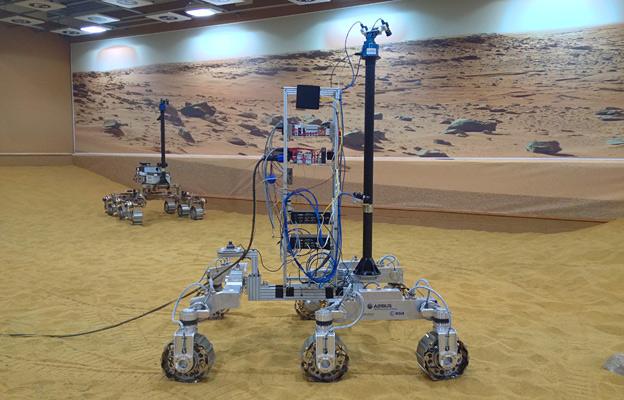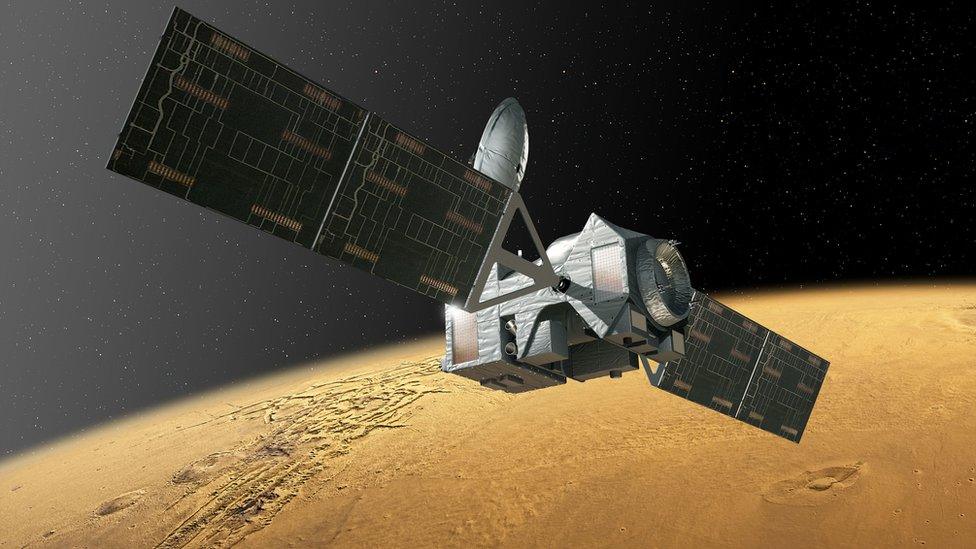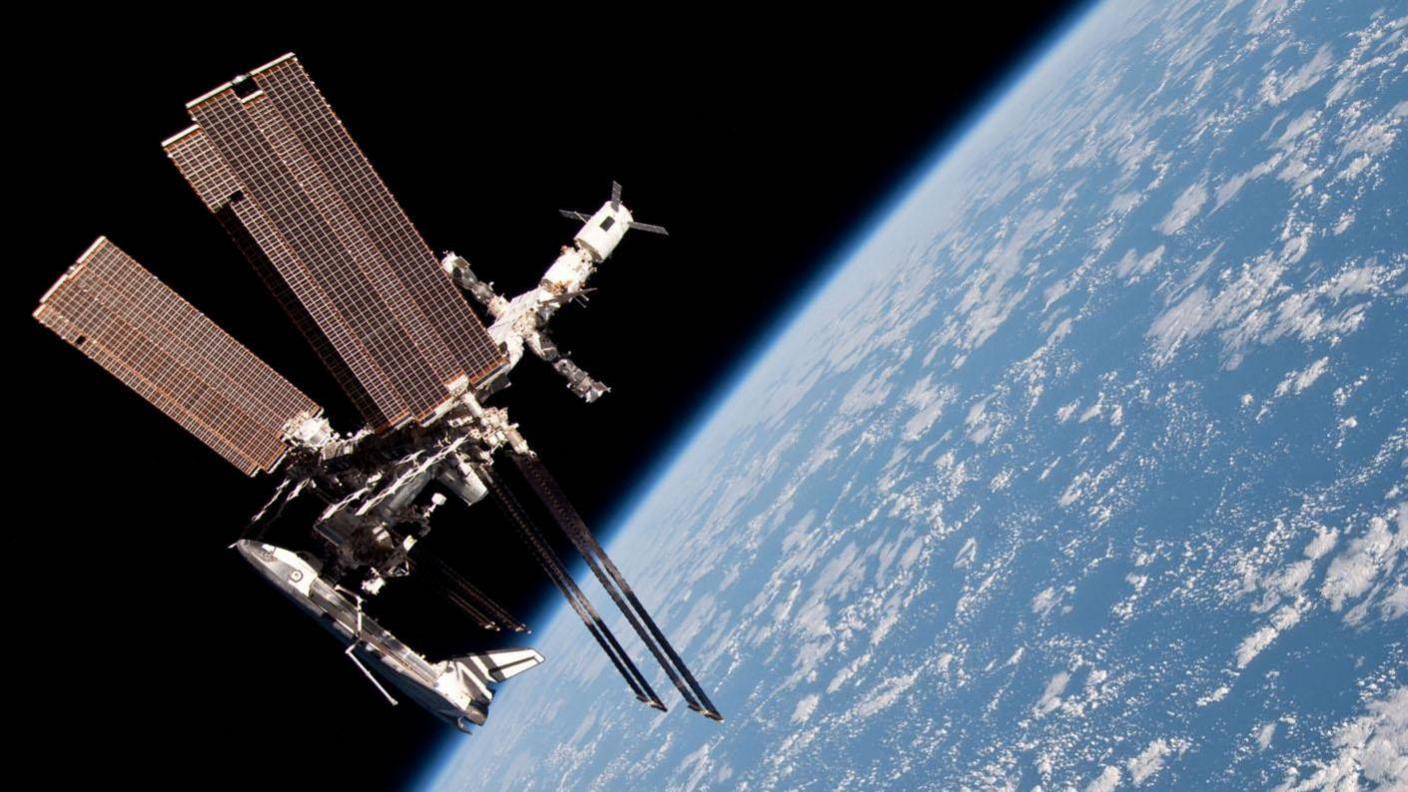'Mars yard' to test European rover
- Published
Richard Lancaster gives the BBC a guided tour of Stevenage's own indoor version of the Red Planet
Airbus has built a giant sand pit in Stevenage to mimic the surface of Mars.
The indoor terrain, about the size of a basketball court, will be used to test systems on the rover that Europe will send to the Red Planet in 2018.
ExoMars, external, as it is known, will be a six-wheeled robot tasked with finding signs of past or present life.
The UK division of Airbus Defence and Space, external will assemble the rover from parts built across member states of the European Space Agency (Esa).
But it has the specific role also of developing the vehicle's autonomous navigation system.
The great distance between Earth and Mars means the robot cannot be controlled in real time; commands take tens of minutes to cross the space between the planets.
Instead, ExoMars will be given a destination to reach, and its onboard cameras and computer will then work out the most appropriate route, avoiding large boulders and potential fissures in the ground.
The new "Mars yard" is being used to develop the necessary algorithms.
"We need to verify the performance, to check that the algorithms and the processes that we're using will actually work - will be fit for purpose to deal with the conditions and obstacles we expect to find on Mars," said Dr Ralph Cordey from Airbus.
The sand pit will play a critical role also in testing the rover's drive systems.
Like previous vehicles sent to the Red Planet, ExoMars will be based on a free-moving, rocker-bogie suspension that allows it to climb over small rocks.
This equipment will be provided by robotics experts at MacDonald Dettwiler and Associates in Canada (Canada is a co-operating member state of Esa).
Various prototypes already at Stevenage have been trying out the new "Marscape".
The lessons learned will be built into the eventual "flight" model - the actual vehicle that is sent to Mars.
This itself will never see the Mars yard. It will be assembled in a new "cleanroom" at the Airbus factory to ensure it is kept spotless, and free from any Earthly contamination that could confuse its instruments when they go hunting "biosignatures" on Mars.
Once Airbus has assembled the flight model, it will be sent to Thales Alenia Space in Turin, Italy, where its payload of scientific instruments will be added.
The key UK science contribution is the PanCam imaging system developed by a team under the leadership of Prof Andrew Coates at the Mullard Space Science Laboratory.
The current US rover, Curiosity, has wowed us with its pictures from Gale Crater. ExoMars hopes to do the same.

Business Secretary Vince Cable MP (L) said space had a big inspiration factor
"Curiosity can see a lot, but PanCam will be able to see a much larger region in its field of view," Prof Coates explained.
"It can also zoom in and view sections in great detail with our high-resolution camera. With that we'll be able to narrow down where to drill to search for signs of life."
Precisely where on the Red Planet ExoMars will go has yet to be decided.
The project is holding its first landing-site selection meeting this week in Madrid, Spain, but it will be 2017 before a final choice is made.
Another outstanding matter is ExoMars' budget. Esa has capped the project at 1.2bn euros. This sum covers both an atmospheric-research and telecommunications satellite as well as the rover itself.
Esa member states have yet to commit all of the money that will be needed, but the agency's science director, Alvaro Gimenez, said the gap - of roughly 165m euros - should be closed very soon.
"Yes, there is a gap. It's less than 15%, but we need to close it, and the sooner the better, and we expect to do that before the end of the year," he predicted.
The Mars Yard was officially opened by Business Secretary Vince Cable. He said projects such as ExoMars fitted with the government's campaign to get more young people pursuing technical subjects at university.
"We are massively undersupplied in the UK with STEM graduates, and I think the excitement generated by space as an industry provides a lot of energy behind that campaign," he told reporters.

Esa has just published its "longlist" of potential destinations for ExoMars

Rover prototypes are already being put through their paces in the Mars yard
Jonathan.Amos-INTERNET@bbc.co.uk and follow me on Twitter: @BBCAmos, external
- Published27 March 2014
- Published21 June 2013
- Published18 June 2013

- Published20 November 2012

- Published5 September 2011